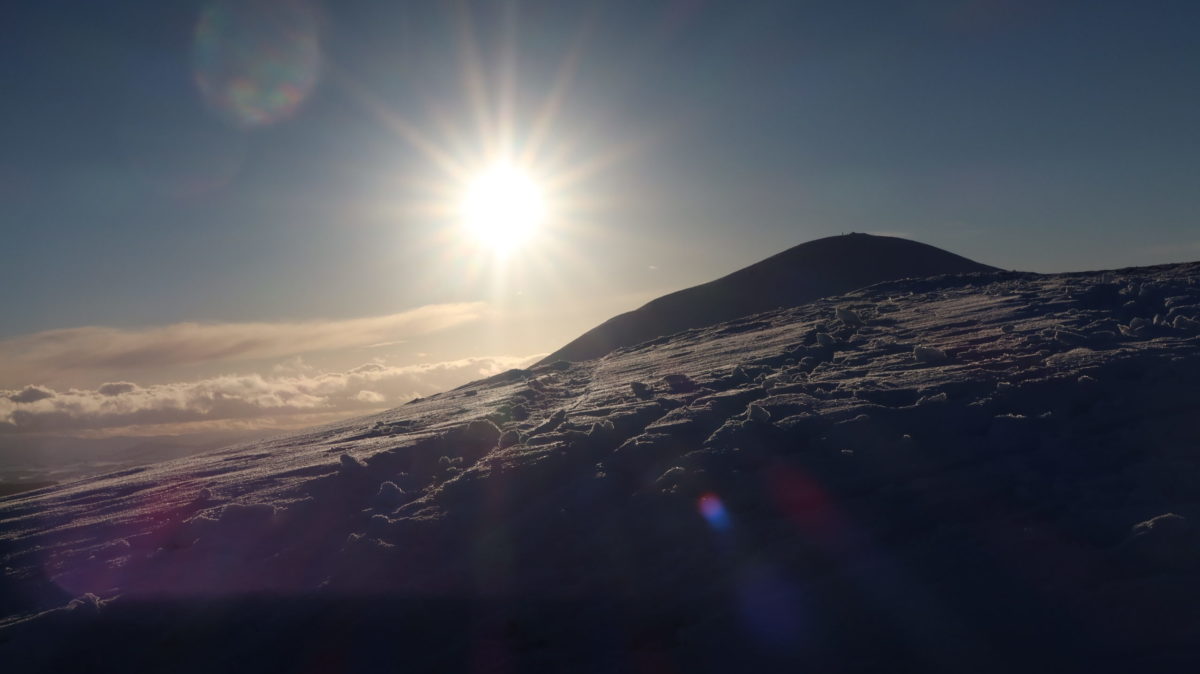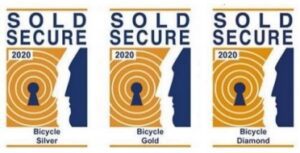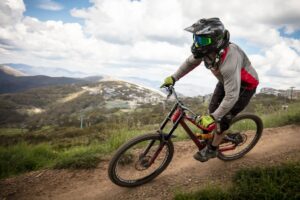Cycling in the snow: Exploring a winter Scotland

(Originally published February 2021)
I can’t remember a winter like this one since I moved to Edinburgh in 2009. Growing up in Germany as a child I was used to loads of snow between November and March, but in Edinburgh it has been rather rare to see the white stuff in town. The Beast from the East brought proper winter conditions for a few days in 2018, and I can also vividly remember the conditions in 2010, when I cycled home for Christmas on ice and snow throughout the UK. Those spells were rather short though. A few days of snow, and then it was all gone way too soon.
This year has been different. The Pentland Hills had their white coat on since Christmas now, and last night I was walking in about 25 cm of snow on Cramond Island, something I have never experienced before. I was almost tempted to take my snowboard there, it would have been suitable for a short downhill run. As carrying a snowboard on a bike is something I haven’t mastered yet, I did stick to cycling and a short walk to discover the island.
While there are plenty of articles about winter cycling, this one is different. I have learnt some small things this winter, and would like to share them. Cycling in the dark in the snow could be the most miserable experience without the right equipment, and potentially dangerous. But with the right tools it has given me some of the best moments this year so far, taking my mind away from the dreich reality of lockdown.
Tyre & Tube Choices
As with all other cycling, the right tyres are essential for a safe and enjoyable winter experience. I have tested a few different types of tyres over the years now. As a lot of things in cycling, tyre choices are also personal and depend on your riding ability.

For icy conditions only studded tyres provide grip. The choice here is more limited as usual, as producing studded tyres is expensive, and not many companies choose to go there. From my research I found three brands offering studded tyres: Schwalbe, Continental and 45NRTH. The latter one currently doesn’t have a distributor in the UK, although Bikemonger still stocks some of their range. Continental and Schwalbe offer products at similar price points. For all my adventures I have cycled with Schwalbe tyres for more than five years now, and had the chance to speak to Tim Ward, their UK Marketing Manager, while researching this piece, so I will focus on Schwalbe for this blog.
For studded tyres, Schwalbe offers three different choices at the moment: The Ice Spiker Pro for mountain bikes, available from 26’’ to 29’’ and up to 2.6’’ wide, retailing between £80 for the wire bead and £89 for the folding versions. The Marathon Winter Plus and Winter tyres are available in a wide range of sizes. The Schwalbe Winter, retailing at around £44, has only half the amount of spikes, but offers a good compromise for most UK conditions. The Schwalbe Marathon Winter Plus offers more spikes and added puncture protection with the SmartGuard layer at around £62 per tyre. If I wouldn’t be using prototypes for a new tyre at the moment, the Marathon Winter Plus would be the choice for the bike I have used for all winter riding this year – a Kinesis Tripster AT gravel/adventure bike with 700CC tyres.

For most of my riding this winter I haven’t used studded tyres but the Schwalbe G-One Ultrabite at 40 – 45mm width. At around £60 this is one of the priciest, but also the toughest model of the G-One gravel range. And while it is slower on tarmac, it provides excellent grip off-road in all conditions but ice. Most of the time winter riding in the UK is more likely to be on mud than on snow (except this year), and the tread pattern of the tyre offers excellent grip and clears mud and snow well. Although I haven’t tested the tyre myself, for more onroad use the Schwalbe Marathon GT 365 looks like a good choice too.
While I love riding studded tyres at the moment, the downside is that they are very noisy on tarmac. So I only use them where really necessary, and often swap tyres around. Which brings me to the next topic – tubeless or not?

For most of my riding I think that a tubeless setup is far superior to tubes, as it allows for my lower pressures when riding, and therefore much more grip and control. Especially on snow and mud that is a huge advantage. But frequent tyre swaps mean a lot of wastage of sealant, so for this winter I have tested the Schwalbe Aerothan tubes as an alternative. Tubolito offers a similar product to the Aerothan in strength and packing size, but I like Schwalbe’s commitment to the environment as a brand – the tubes are 100% recyclable (I could not find any information on that on the Tubolito website). After more than 1,500 km in I haven’t had a single puncture, but could ride my tyres at around 20psi or even lower (not advisable with standard tubes). At almost £25 per tube for my tyre size they are expensive, but frequent changes of sealant would result in comparable costs. When using the tubes, tyres need to be of similar sizes too, and I haven’t tried patching them so far. In winter I would always carry two spare tubes anyway, as patching a tube in sub zero conditions is a task very likely leading to failure.

Microspikes
While grip when cycling is important, a fair bit of pushing the bike is often the reality of winter cycling too. Deeper snow might be fun to cycle downhill, but not uphill. For an after work expedition I discovered that Kahtoola microspikes make an excellent addition to my 45NRTH Japanther cycling boots. Those boots are warm enough to cycle in conditions down to minus 5 degrees, but sadly they are no longer available. Their predecessor Ragnarök offers less stability when walking, but is still a good choice for winter cycling. The microspikes pack small, and strapped onto the boots they provided an excellent choice to push my bike up the steep and icy slopes of Caerketton Hill in the Pentlands on Burns Night. The downhill was one of the best rides I had so far this year.

Tout Terrain Touring Pedals
Even small amounts of snow can be a pain with normal clipless pedals. The snow melts and freezes in the clipless mechanism, and often it requires brute force to get the shoes to clip in. Since my Iron Curtain Gravel Trail adventure in October I have used the Tout Terrain Black Label Touring pedals, which offer a clipless mechanism (SPD) on the one side and grippy flat-body for conventional shoes on the other. They are relatively light and have great bearings, and allow me to use the flat side if I can’t clip in. Even riding with microspikes strapped on my cycling boots was fine.
 (Picture: Mark Beaumont)
(Picture: Mark Beaumont)
A Smock
The last winter discovery for cycling was using the Barricade Overland Rain Jacket. At £100 it is one of the cheaper waterproofs I have owned, but it has done an excellent job at that. The biggest advantage of the smock design is the rather large amount of storage it offers in the front pocket, which also doubles up as shelter for my hands when waiting around waiting somewhere, or simply enjoying the scenery. I can also easily be zipped open on the side up until the armpit, which allows for good ventilation should the sun come out, without compromising wind protection on the front, which is definitely needed most of the time.
Being visible is super important too, so good lights are key, as is colourful clothing. Or indeed, a bike and helmet in fluorescent orange – matching! Happy riding!







